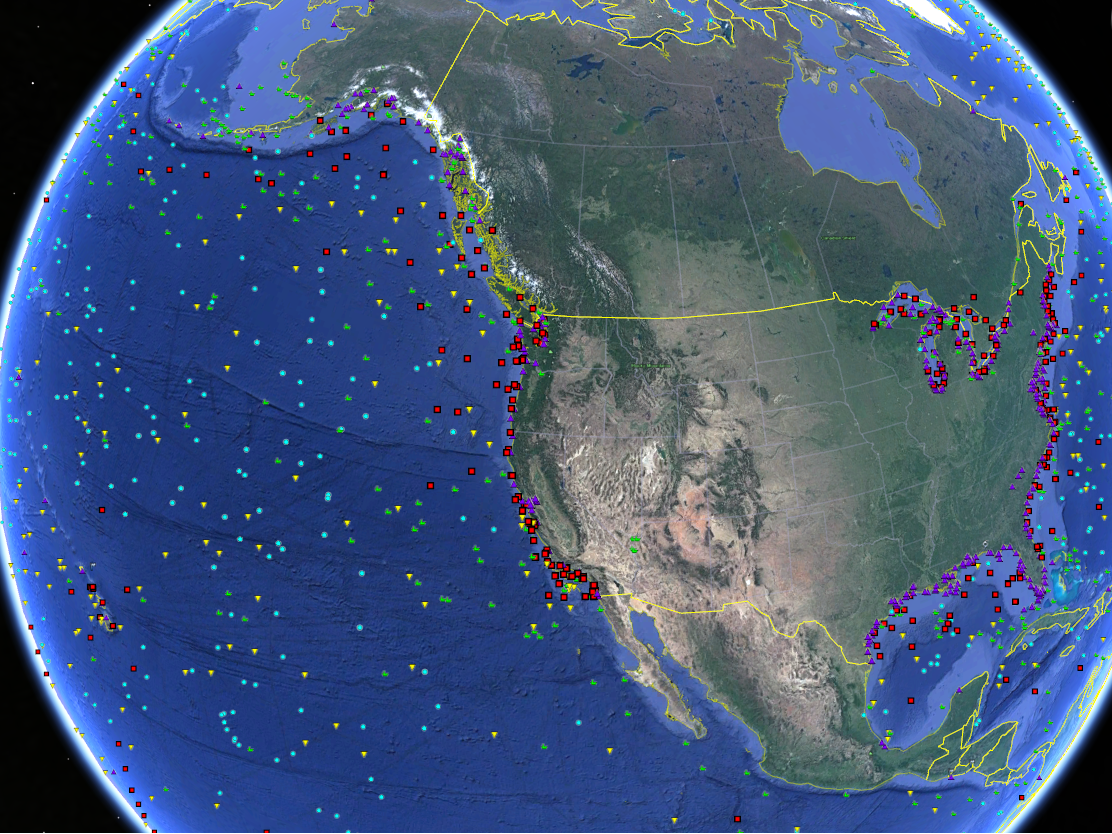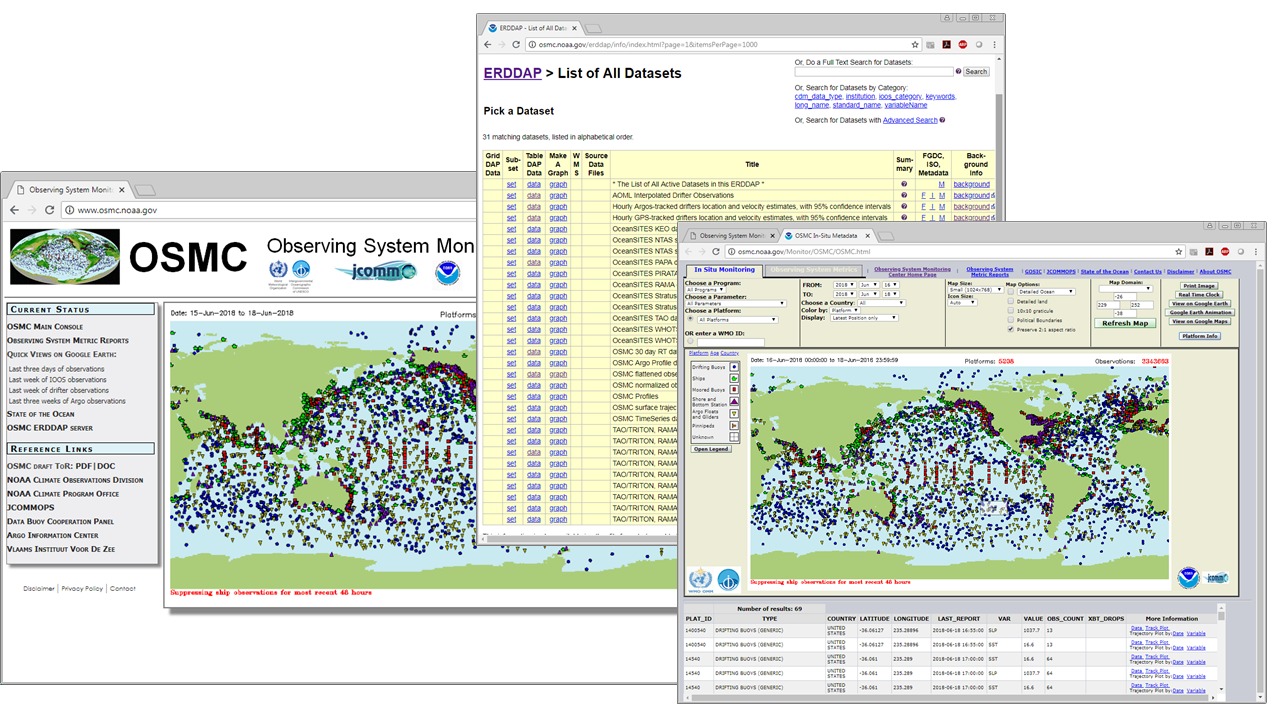
Observing System Monitoring Center (OSMC)
The Observing System Monitoring Center (OSMC) project exists to join the discrete "networks" of global in situ ocean observing platforms -- ships, surface floats, profiling floats, tide gauges, etc. – into a single, integrated system. The OSMC addresses this goal through capabilities in four areas: 1) it captures the real-time ocean data stream from the NOAA GTS downlink into a database, and makes those data available at minimal delay to scientific end users through easy-to-use, service-oriented techniques; 2) it utilizes these data to compute metrics, indices and indicators of effectiveness of the observing system (the scientifically useful data it produces); 3) it strives to integrate the community of delayed-mode data assembly centers under a unified set of data services; and 4) it provides real-time monitoring of the integrated networks of in situ platforms.
